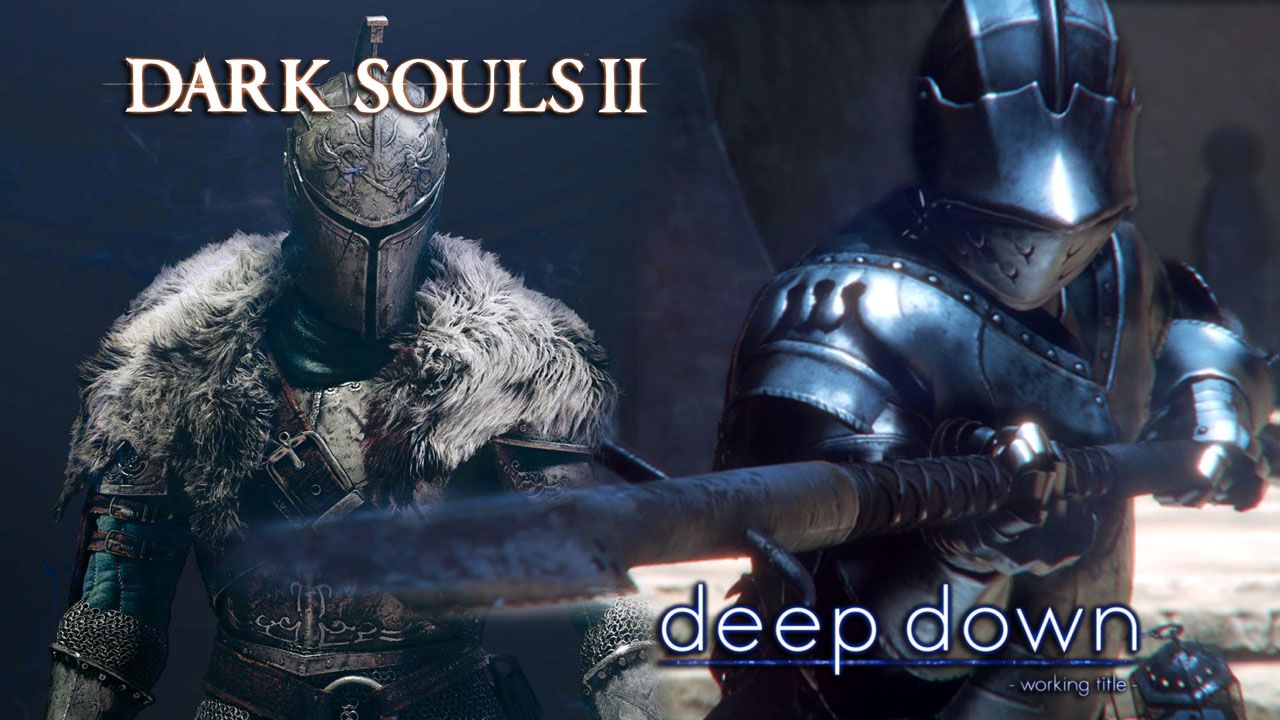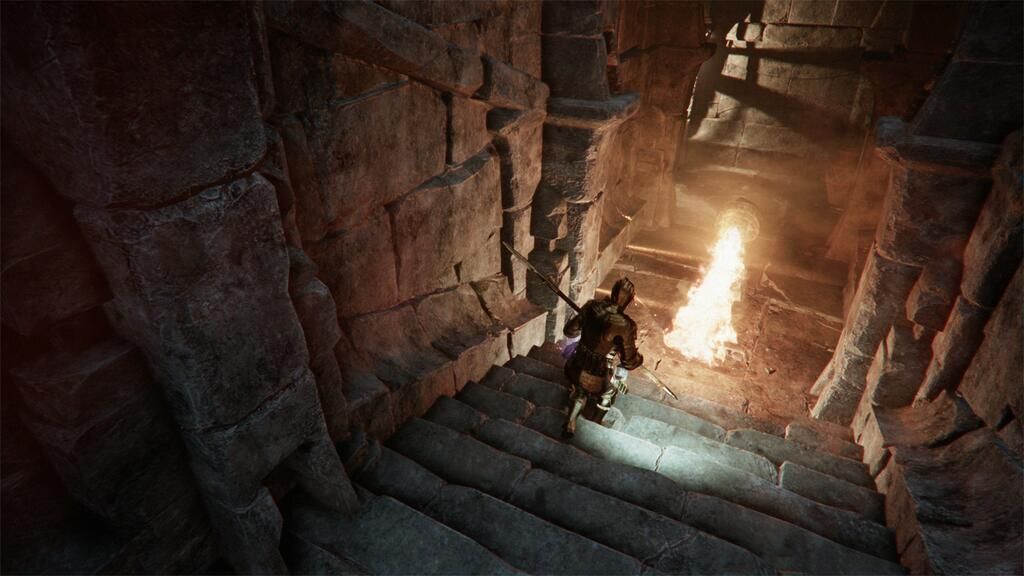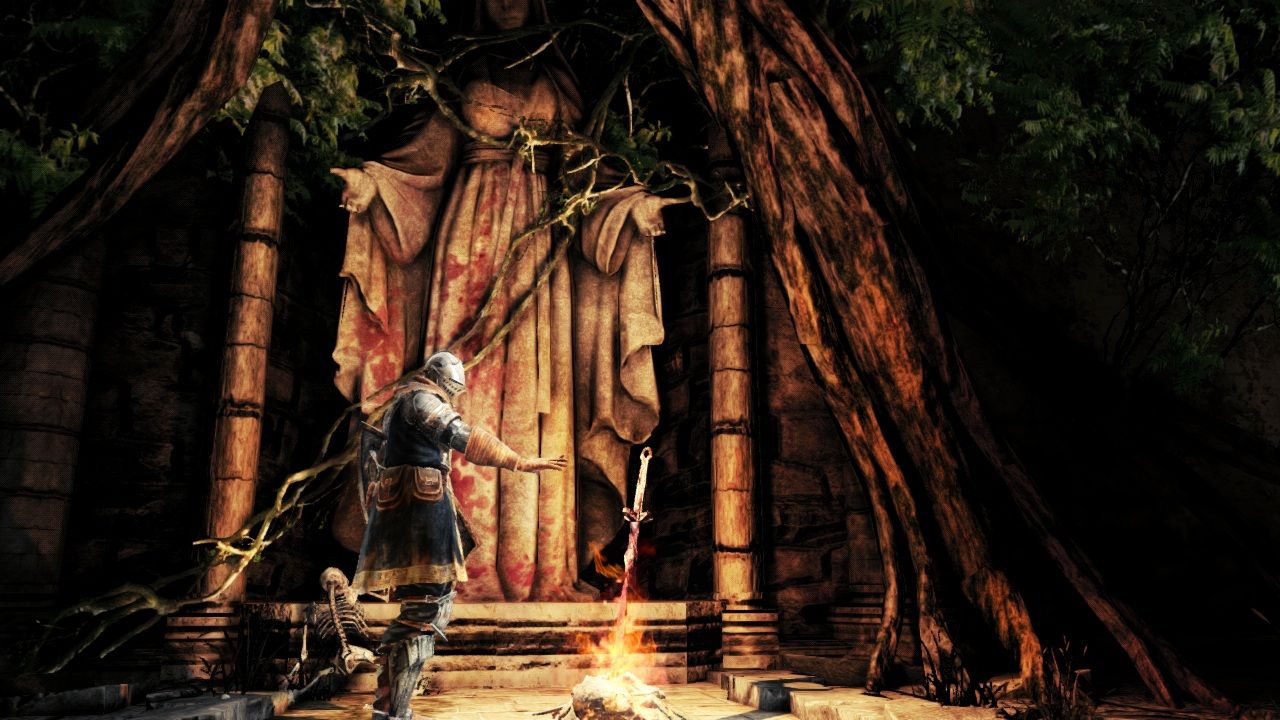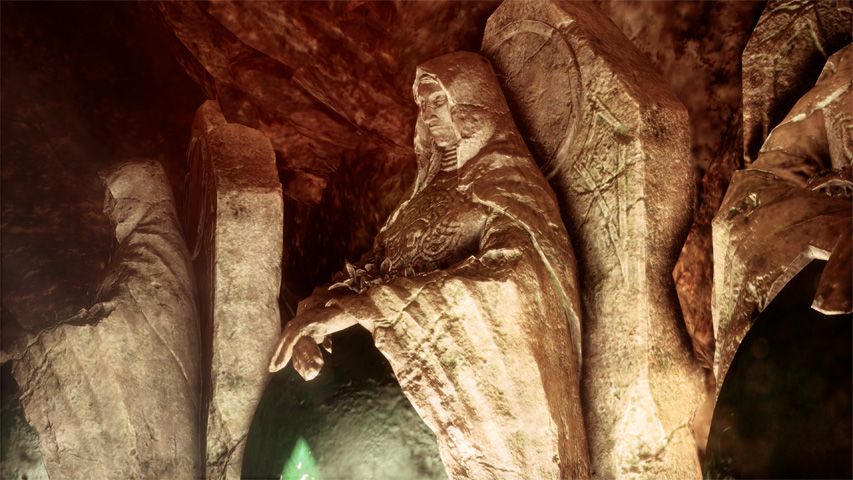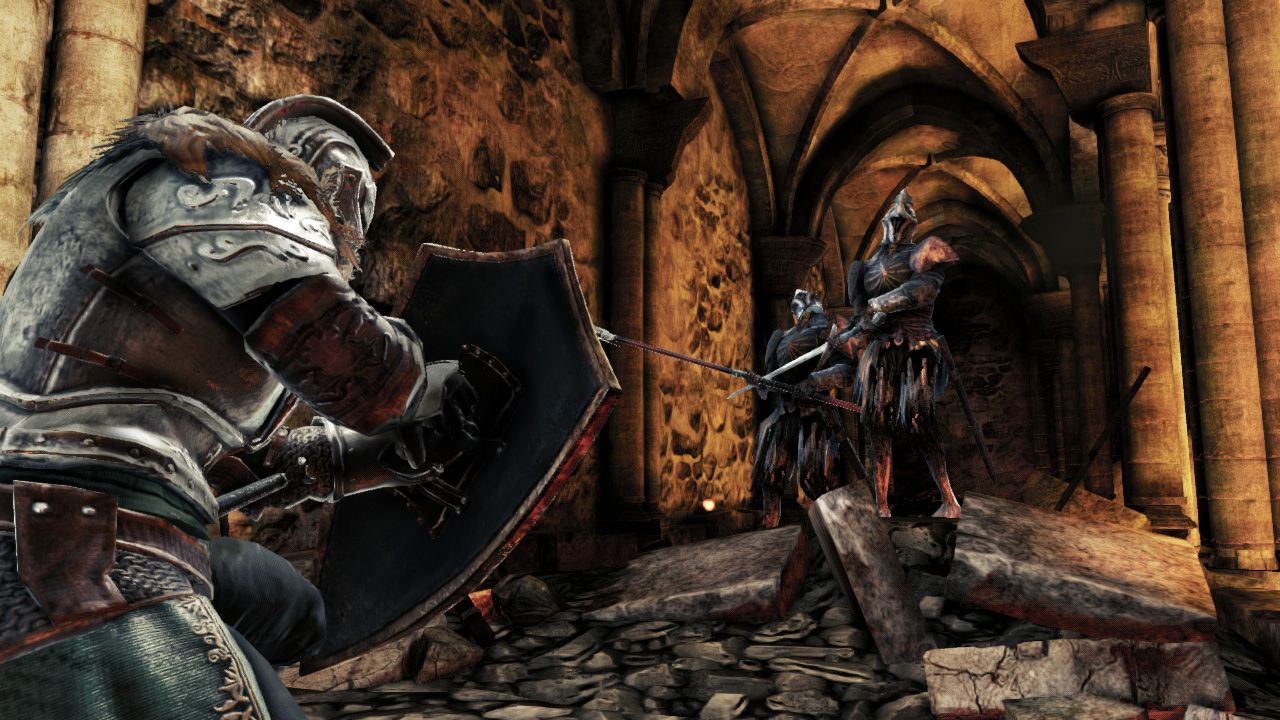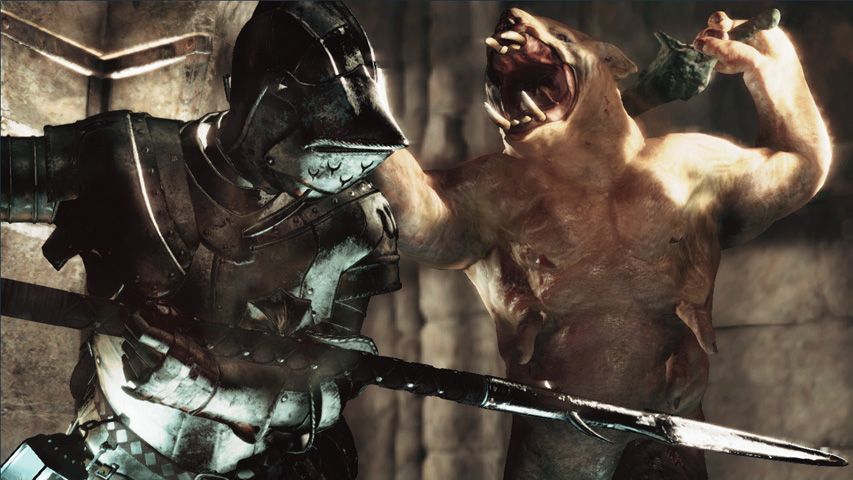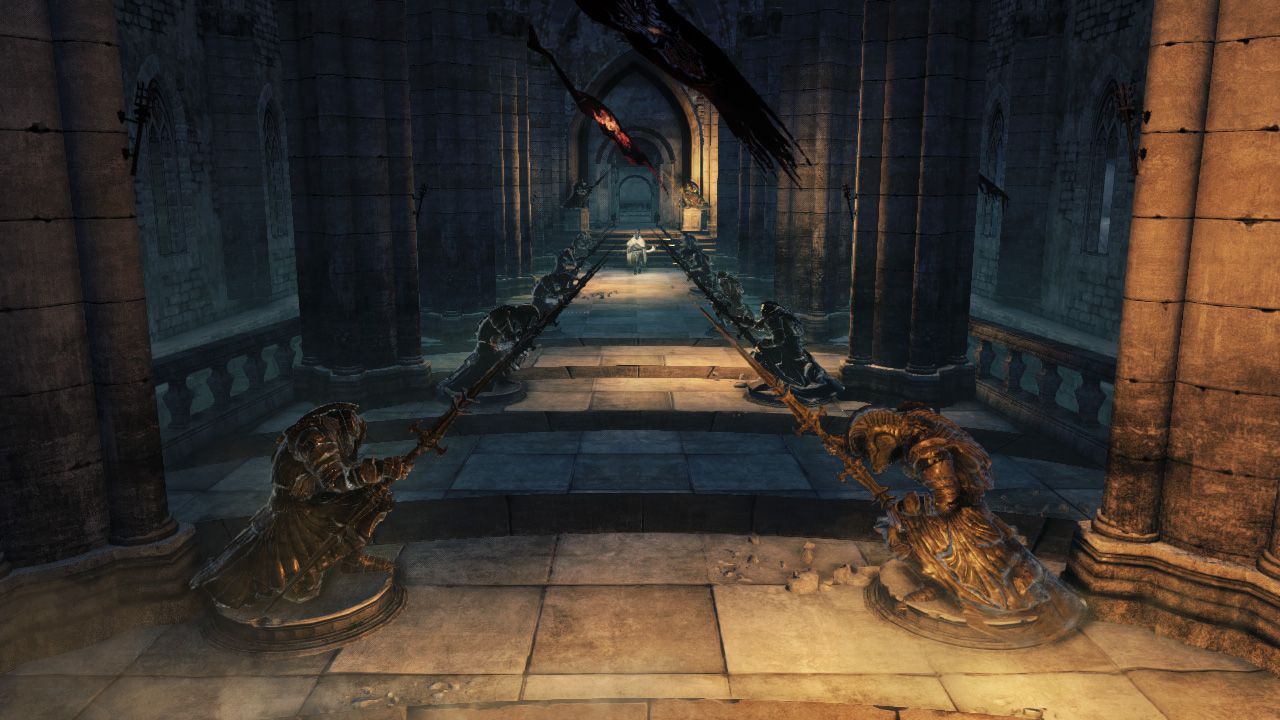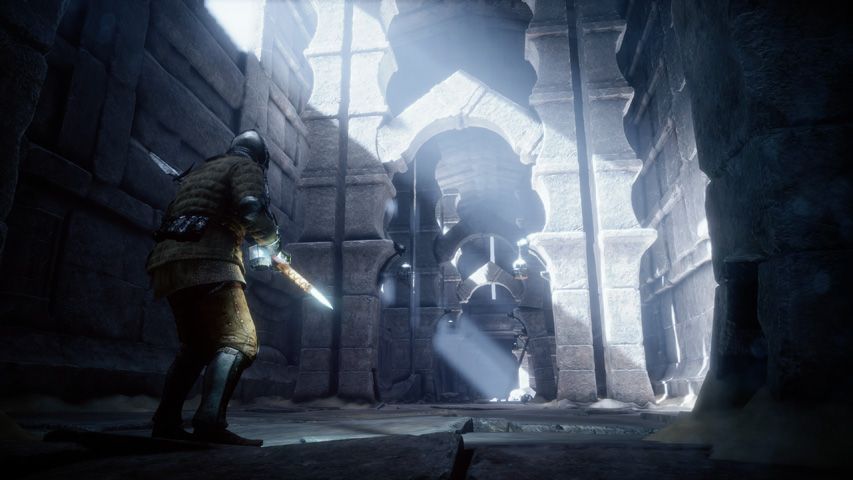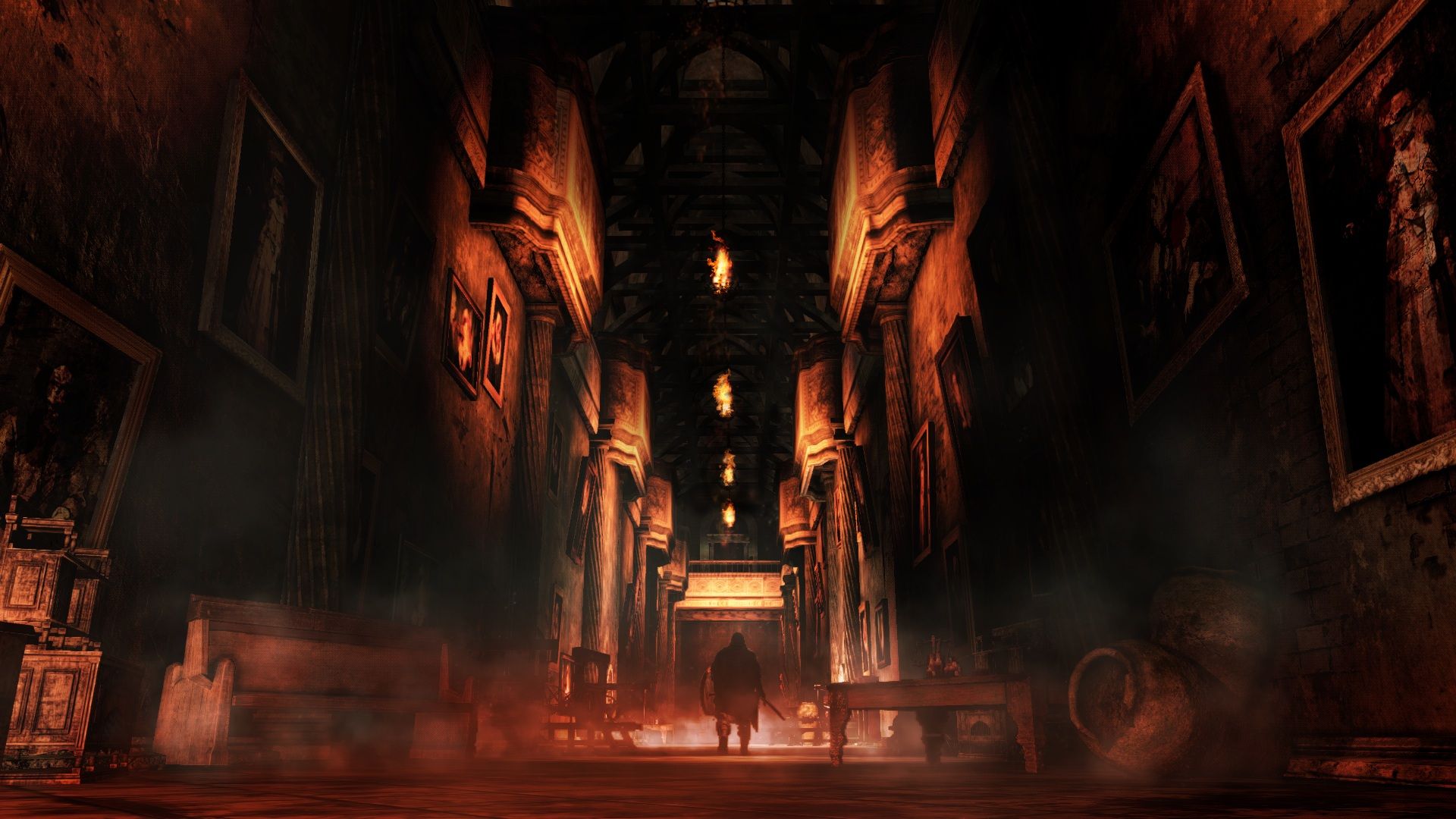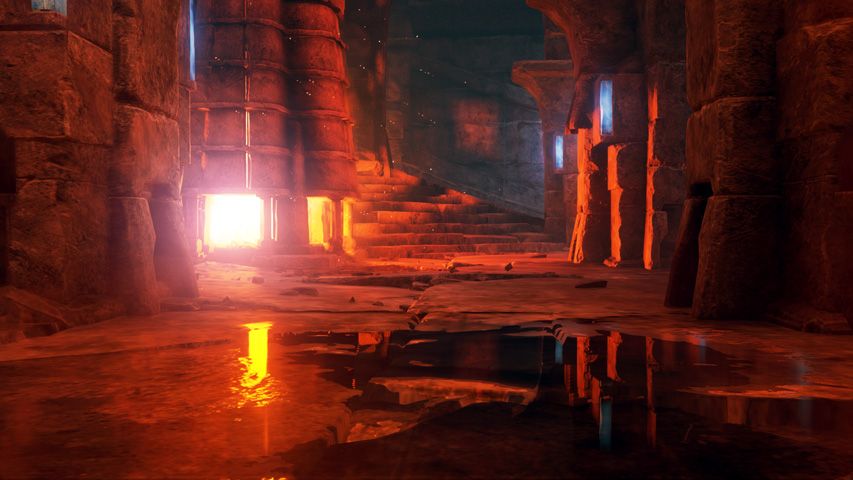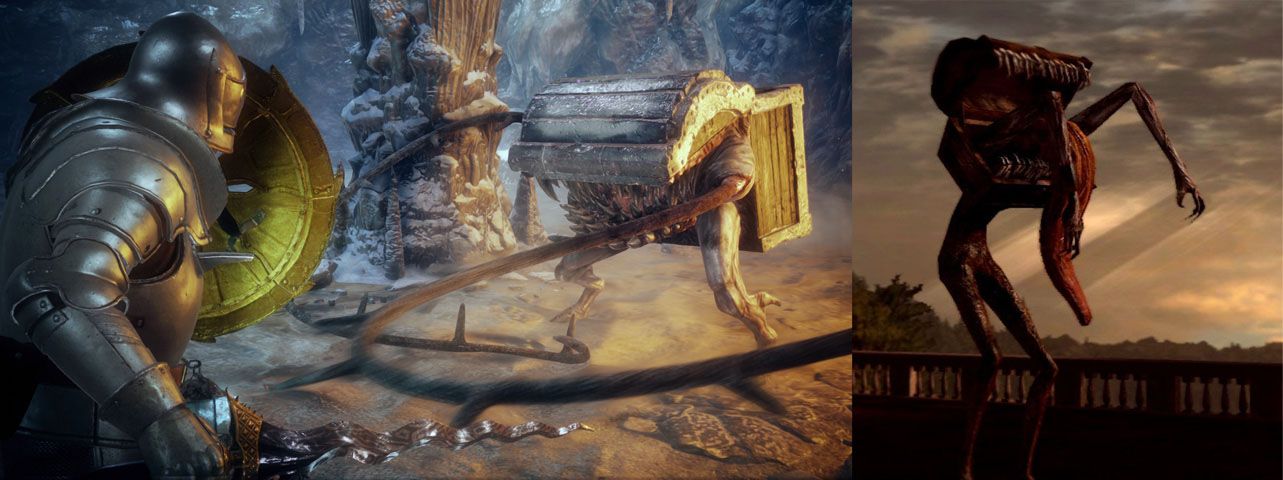Almost every time we post a news piece about Deep Down, especially if it focuses on visuals, we read comments on how Capcom "copied" the Dark Souls franchise, and how similar its RPG looks to Dark Souls II or Dark Souls.
That's why we decided to run a little screenshot comparison between Deep Down and the upcoming Dark Souls II selecting pictures that featured similar elements and comparing them, not just in their visual fidelity (which would be pretty much unfair for Dark Souls II that is designed for old generation consoles), but mostly in their art and rendering style, to see what the two games really have in common.
In the pairings below you'll see the screnshot from Dark Souls II above and the picture from Deep Down under it, with a brief explanation of our findings.
This is the most relevant pairing we could find, as the two pictures really are very similar in what they portray. Of course Deep Down has a much higher overall polygon count, more detailed textures and normal maps and better lighting, but the biggest difference is in the style between the two games.
Deep Down aims to portray a grittier realism, with cooler lights and materials that give a strong sense of texture, while Dark Soul's visual direction is shifted towards a slightly more cartoonish look and feel.
While the angle is different, in both pictures above we can see statues illuminated by a strong light source. Even here the difference in style is pretty evident. While Dark Souls II looks more like an illustration in the still, Deep Down aims clearly to get as close to photorealism as the hardware allows.
In the pictures above we can notice that there's a certain level of identity in the portrayal of armor. While Dark Souls II tends a little more towards fantasy than Demon's Souls and the first Dark Souls, it's still fairly accurate, while Deep Down tends to stick to semi-historical designs for the most part. A big difference seems to lay in the portrayal of monsters, where Deep Down seems to use more animal-like features and over-the-top traits in almost all the critters we saw so far.
This pairing showcases the hallway of a dungeon lined with pillars. It's easy to notice the difference in lighting style, with Dark Souls using warmer lights to lean towards a slightly more cartoonish style.
While in these two environments illuminated by flames Deep Down actually uses the warmest colors, they still interact with the environment in a direction that tries to reproduce photorealism, as opposed to the illustration-like look of the Dark Souls II still.
As a bonus, here's a comparison of the jacky in Deep Down and the mimic in Dark Souls. We had to use one from the first chapter of the franchise because no pictures of mimics from Dark Souls II have emerged yet.
They definitely look very similar. The mimic in Dark Souls II has a long tongue, actual hands and longer legs, but overall it's hard to deny that they are very much alike, which isn't too surprising considering that they're both inspired to their historical predecessors from the Zelda and Final Fantasy series.
In conclusion we can definitely say that there are similarities between the two games, but they're limited to common inspiration (the mimic and medieval history), the attempt to portray armor and weaponry in a fairly realistic manner, and the fact that they both feature dungeons and fantasy monsters.
On the other hand Deep Down strives for photorealism, while Dark Souls II aims a bit more towards the cartoonish, with warmer lights and more stylized features. Gameplay, so far, looks nothing alike, with Dark Souls II being described as just as unforgiving and ruthless as its predecessors, while Deep Down will even come with a casual mode for those that fear the nightmares induced by seeing a game over screen too often.
Ultimately there are elements that can induce a casual viewer to think that the two games are alike, but a deeper observation seems to indicate that not only they offer very different experiences, but even their art direction and visual style have little in common.

